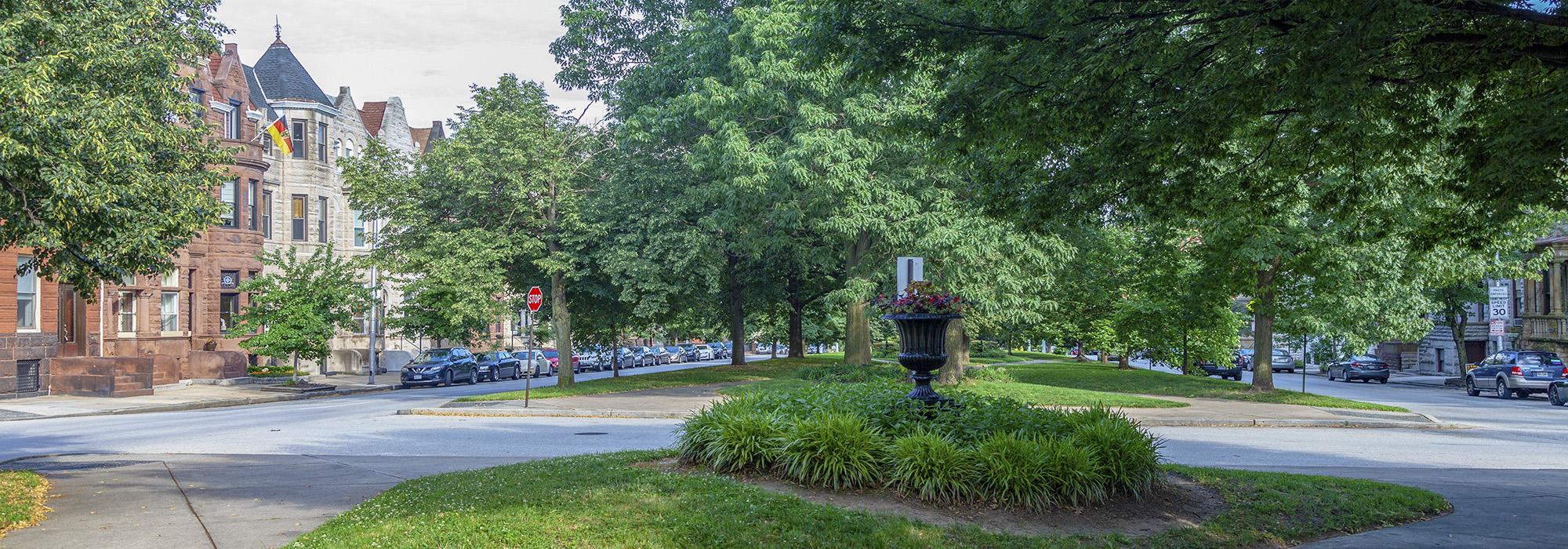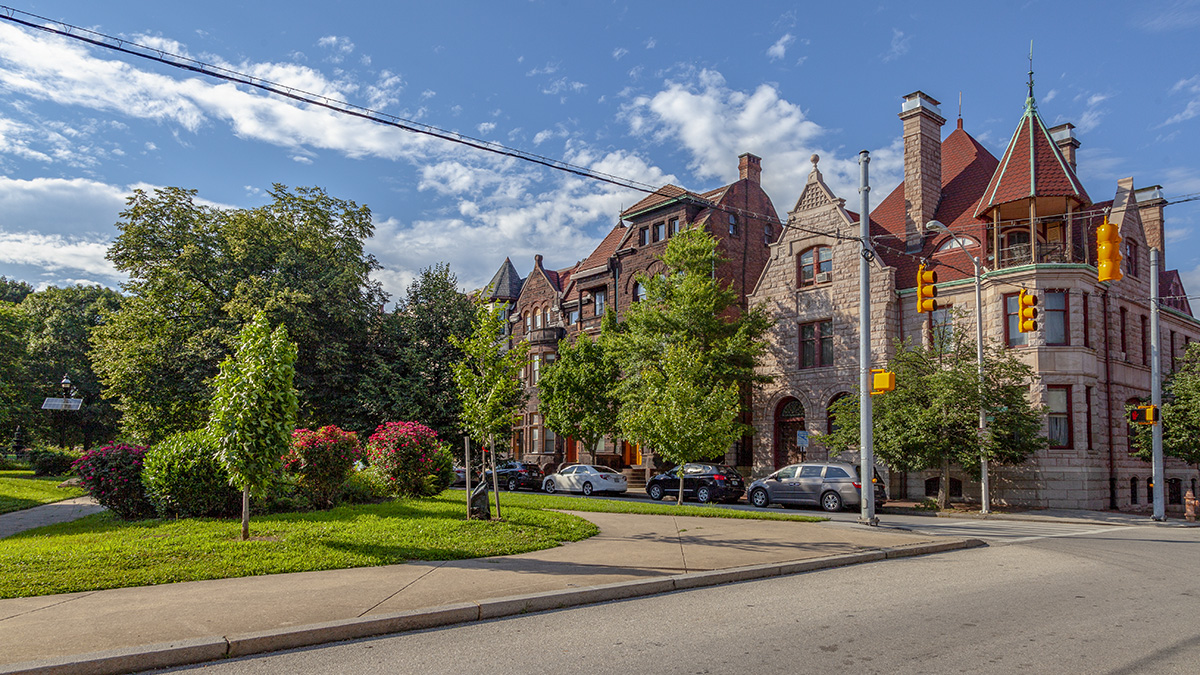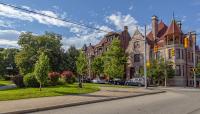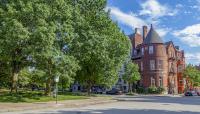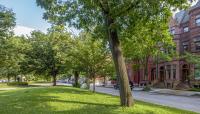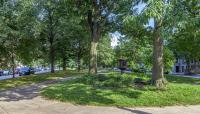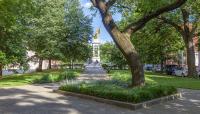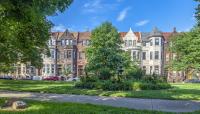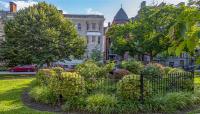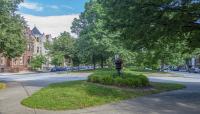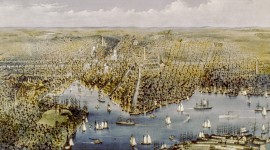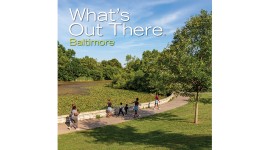This boulevard developed in the latter half of the nineteenth century as Baltimore stretched northward, spurred by expanded streetcar access and steady economic growth. Located northwest of Baltimore’s Inner Harbor and extending from Dolphin Street to North Avenue, this nine-block-long corridor is planted with lawn and lined on both sides with a variety of deciduous trees, including oaks, maples, ginkgo, and horse chestnut. Framed on either side by two-lane roadways (both called Eutaw Place), the continuous central walkway is punctuated by fountains, garden squares with benches, groupings of understory plantings, and urns filled with annuals. Installed in 1911 at the intersection with West Lanvale Street, the Francis Scott Key monument is the most prominent built feature on the boulevard. It includes a statue of Columbia holding an American flag atop four fluted columns. At the base of the columns, Key is depicted delivering the Star-Spangled Banner from a boat, the whole composition set within a water-filled basin. The boulevard’s setting is composed of row houses, apartments, and several ornate mansions dating from the late nineteenth to early twentieth century. Notable among these buildings are the museum of civil rights activist Lillie Carroll Jackson in her former home and the Eutaw Place Temple, a Renaissance-style marble synagogue designed by Joseph Sperry and visible from much of the city. Eutaw Place is a contributing feature to the Bolton Hill Historic District, which was listed in the National Register of Historic Places in 1971.



